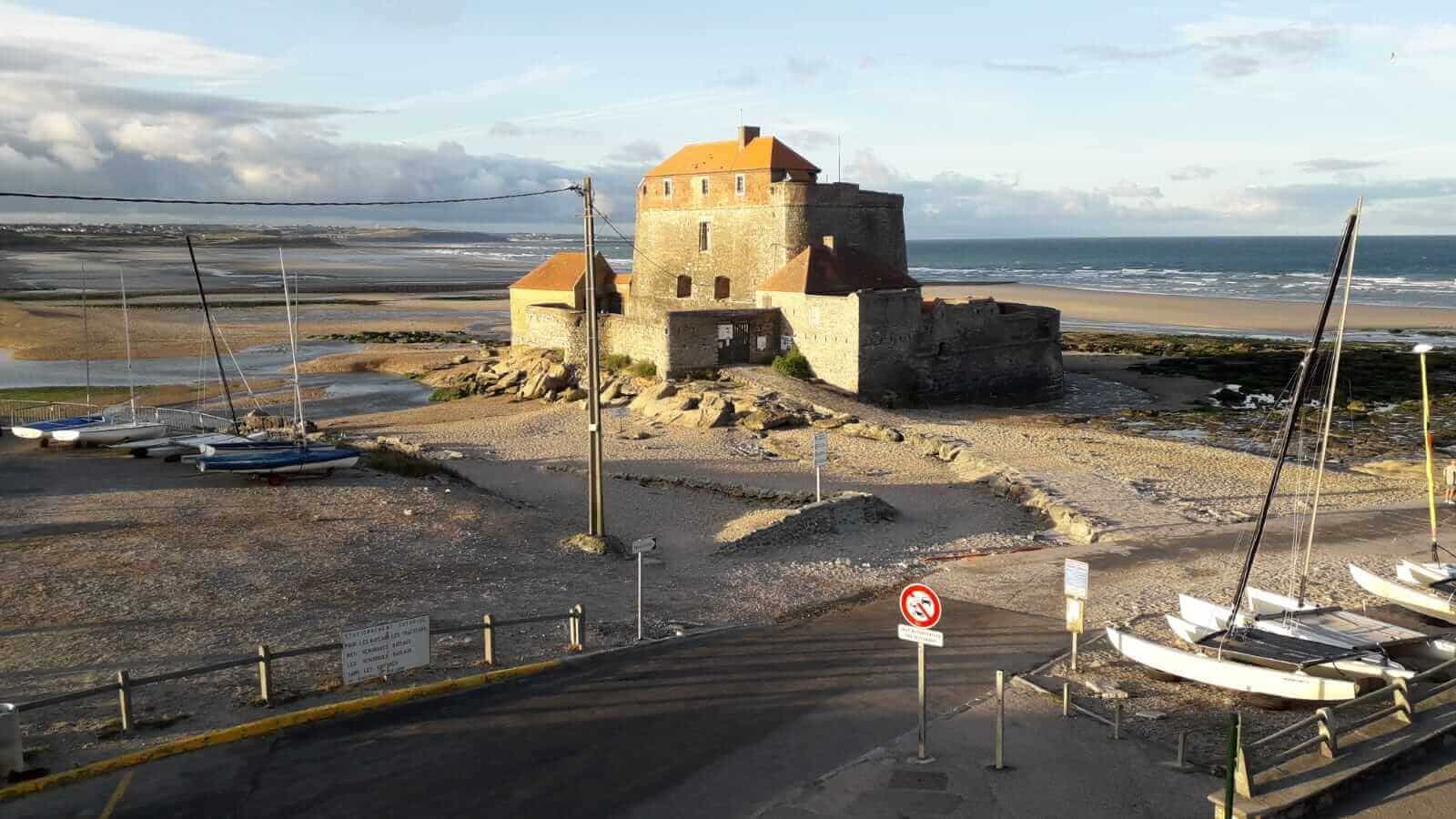Ambleteuse
Ambleteuse is located between Calais and Boulogne-sur-Mer, accessible via the A16 motorway (sortie n°34 – Wacquinghem) or by the D940 departmental road. The nearest station, served by the TGV Paris–Lille–Rang-du-Fliers, is in Boulogne-sur-Mer.
The village is located 9 km from Boulogne-sur-Mer on the protected site of Deux Caps et Parc naturel des Caps et Marais d'Opale between Wimereux and Audresselles.
This village is best known for the majestic fort (built in the 17th century by Vauban under the orders of Louis XIV), as well as for the bay of Slack with its unique flora.
At high tide, the Fort d'Ambleteuse is surrounded by the sea. On stormy days, it is literally besieged and attacked by powerful waves which explode on its sides in impressive sprays of foam.
The promenade will give you a view of the beach and the Fort. At high tide the beach is made up of rocks and pebbles. The sea, withdrawing, will allow you to enjoy the sand. In the village in height, you will be able to find various shops, and restaurants. (see the bottom of the page) .
Hiking enthusiasts can go up the beach towards Wimereux at low tide, or do the Slack loop which passes through the dunes and forest. This loop is ideal for a family walk.
A little history
Ambleteuse's position, on the Slack estuary, gives it special strategic importance for controlling maritime traffic in the Channel and the North Sea and the entrance to the port of Boulogne. It was there that Julius César had part of his fleet embarked to invade Great Britain in 54 BC.
It is also there that the King of England, Henri VIII after his conquest of northern France, had two strongholds built in the 16th century to defend the coast against the French.
In 1680, it was the Marquis de Vauban who had a fort built at the mouth of the Slack, and later it was Napoléon Ier who took over the place by building a port. It was from there that he planned to invade England in 1805, before being called to the other end of Europe to fight the Battle of Austerlitz. Napoléon III took an interest in it again when he joined forces with England against Russia.
At the end of the 19th century and the beginning of the 20th century, the Opal Coast became a holiday resort, Ambleteuse then attracted families from Lille. Three architects made their mark in particular: Louis Bonnier, Paul Destombes and his son.
The Fort
The Fort d'Ambleteuse is the last fort at sea, on the coast which stretches from Cherbourg to Belgium. At high tide, it is surrounded by the sea. It is sometimes wrongly called Fort Mahon because of an administrative error which appeared around 1840 in the transcription of documents.
During World War II, it was occupied by the Germans who installed their artillery there. It was damaged by the explosion of two Allied sea mines in 1945, and was generally in very poor condition after the war.
It took the efforts of the association Les Amis du fort d'Ambleteuse from 1967 (two years after its classification among historical monuments) and especially of Doctor Jacques MEREAU, its founder, to succeed in restoring it by giving it back its former glory. The fort can be visited every Sunday between Easter and All Saints' Day. fort website

Saint-Michel Church
The church of Ambleteuse, built in the 19th century, honors two figures: the first is Saint-Michel fighting the dragon, illustrated by a stained glass window inside the place of worship. Here is also a statue of Saint-Pierre of Ambleteuse, associated with the town. At the end of the 6th century, Pope Gregory I sends bishops to England, led by the future Augustin of Canterbury, alias Saint-Augustin.
Among his companions is an abbot named Pierre, who on his return from Albion is killed in a shipwreck off Ambleteuse (then called Amfleat). It is therefore buried there, but according to the monk Bède the Venerable, a light illuminates the tomb every night. The residents, thinking that it is a saint, then exhumed him to bury him in Boulogne ...
WW2 Museum
The village also has a museum dedicated to the history of the Second World War.
The museum covers 800m² and displays thousands of objects, including pieces of artillery used on the fortifications. There are also some 120 soldiers equipped with uniforms and weaponry of the time.
Finally, the museum is equipped with a cinema room where archive films retrace the Normandy landings and the liberation of Paris.
Shopping
On the dike you will find two places to relax with deckchairs where you can get ice cream, drinks, waffles... But most of the shops are in the village, further up.
You will find restaurants, bakery, delicatessen. A medium grocery ('Carrefour Contact') is located near the museum.